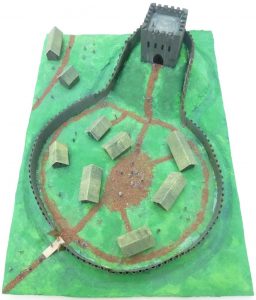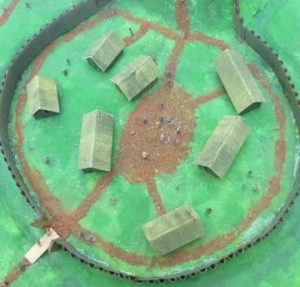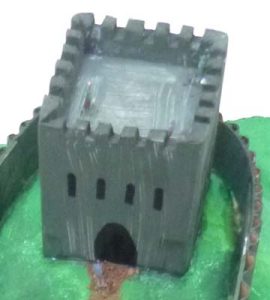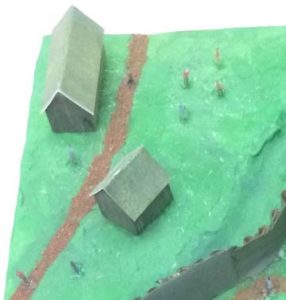 Motte and bailey castles were first built in England by the Normans in 1066, they used them to help keep their settlements secure and safe after their victory at the Battle of Hastings. The Normans built as many as 1000 motte and bailey castles in England and were also used in many European countries including: Denmark, Germany, southern Italy, Anjou, Ireland and the Netherlands.
Motte and bailey castles were first built in England by the Normans in 1066, they used them to help keep their settlements secure and safe after their victory at the Battle of Hastings. The Normans built as many as 1000 motte and bailey castles in England and were also used in many European countries including: Denmark, Germany, southern Italy, Anjou, Ireland and the Netherlands.
The motte
A motte, a mound of earth on top of which there would be a keep (the place the nobles would live), could be natural or man made as sometimes an existing, smaller mound could be added to. Most of the time mottes would be flat on top but varied a large amount in terms of height and diameter. For example, the motte could be thirty metres high, but this was not at all usual; most of the time it would only reach the height of five to ten metres.
The bailey
The bailey was the area of land below the motte and inside the stockade, where the town would be. Baileys would come in a range of shapes and sizes, from one to three acres to an often kidney like shape- however it was sometimes dictated by the land. The bailey would have housed many different types of buildings such as: houses for towns people, stables, bakeries, kitchens, soldiers quarters  and other things like a market with shops and stools.
and other things like a market with shops and stools.
The town
The town was the space inside the bailey where the towns people, soldiers and other followers of the lord would live. As said in the previous paragraph, the town would have shops, houses and all other things needed for living. In the town at 4 am the bells would ring to mark the end of the night watchman’s duty, then at 6 am the market would start and the shops would open, at 8 am the foreign merchants would start trading, then at 9 o’clock it would be breakfast, at 3 pm the shops would close and finally at 8 pm the curfew bells would ring, marking the end of the day, the closing of the gates and the beginning of the night watchman’s patrol.
The keep
 The keep was the place on top of the motte where the nobles and lords lived. The keep would usually be built out of wood but on some occasions were made of stone. To reach the keep there would usually be some form of steps or stairs cut into the motte leading up. In the keep the toilet was called a ” garderobe”, this had a pipe leading down to the fosse or moat which was an easy way for enemies to break in, climbing up the pipe. Life in the keep would have been relatively extravagant as all the people living there would have been very rich.
The keep was the place on top of the motte where the nobles and lords lived. The keep would usually be built out of wood but on some occasions were made of stone. To reach the keep there would usually be some form of steps or stairs cut into the motte leading up. In the keep the toilet was called a ” garderobe”, this had a pipe leading down to the fosse or moat which was an easy way for enemies to break in, climbing up the pipe. Life in the keep would have been relatively extravagant as all the people living there would have been very rich.
The stockade
The stockade was a wall or fence that went round the motte and the bailey which was made out of thick tree trunks, it was very tall so any attackers couldn’t climb over.
The fosse
The fosse, or moat, was a deep ditch surrounding the motte and bailey castle to protect it from intruders.
The village
A village was usually built outside the castle for protection from passing attackers. It would have mud houses with a thatched roof but no windows. The peasants would often have to section off part of their house to keep the animals in and would have very few belongings: some stools and possibly some blankets or other bedding. their diet would mainly consist of vegetables and they would only get warmth from a small fire in the centre of their houses, life was hard for a medieval peasant and the work was backbreaking. It followed the seasons; ploughing in autumn, sowing in spring, harvesting in August. Work began at dawn, preparing the animals and it finished at dusk, cleaning them down and  putting them back into the stalls.
putting them back into the stalls.